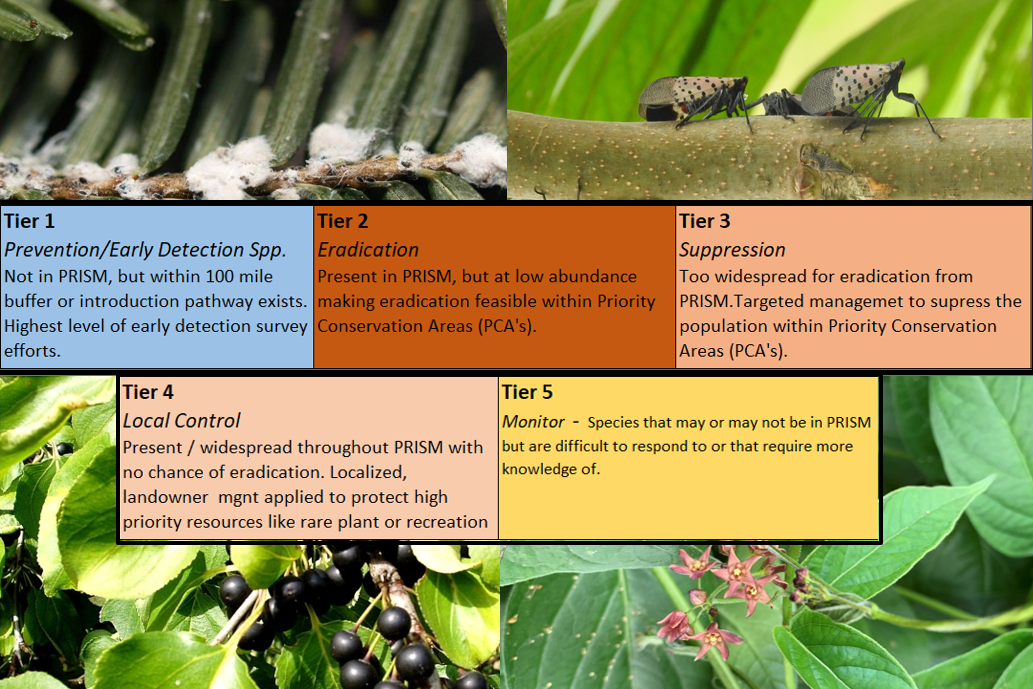Written by, Megan Pistolese-SLELO PRISM
SLELO has developed a Tiered Species List that is aimed to help better strategize management of invasive species in our region. The system categorizes species by known presence and feasible management approach’s: prevention, eradication, suppression localized control, and monitoring.
Tier 1 species are not known to be present within the region but are within a 100 mile radius or a pathway exists for their introduction. Hemlock woolly adelgid and spotted lanternfly are examples of Tier 1 species. For these species, prevention is the best management strategy to implement. SLELO’s early detection team, Robert Smith and Brittney Rogers put Tier 1 species in the forefront of their surveillance efforts. SLELO has also recruited and trained volunteers to recognize and report priority prevention species within this Tier though our Volunteer Surveillance Network.
Tier 2 species are known to be present in the SLELO region, but at low abundance. Eradication is the management strategy in place for these species within Priority Conservation Areas when feasible. Giant hogweed and fanwort are examples of Tier 2 species.
Tier 3 species are considered to be too widespread for eradication although, some areas remain unaffected. Infestations found within PCAs are targeted and populations are suppressed through targeted control efforts like hand pull removals of water chestnut or spot treatments of swallow-wort.
Tier 4 species are also considered to be too widespread for eradication. High priority resources, like rare plant or recreation assets are protected through localized (landowner) management strategies. Purple loosestrife and wild parsnip are examples of species within this tier.
Tier 5 species are species that require more knowledge to learn of their impacts and distribution.
Utilizing this tiered approach allows us to better strategize our management efforts and target outreach initiatives.


